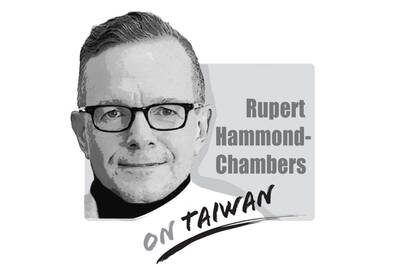The Chinese Nationalist Party (KMT) and the Taiwan People’s Party (TPP) have disregarded procedural justice and disguised their attempt at a power grab as legislative reforms, which has sparked a public outcry.
More than 100,000 people, without being mobilized by any political parties or being led by a specific person, gathered outside the Legislative Yuan on Friday last week in opposition to the controversial reform bills.
The protest has been called the Qingniao movement (bluebird movement, 青鳥運動), named after Qingdao E Road (青島東路) where the protest took place. “Qing” means blue and “dao” contains an element meaning “bird” in Chinese. It is the biggest social movement in Taiwan since the Sunflower movement.
Protestors in the Qingniao movement behaved in a peaceful and rational manner.
The movement was organized by the public and encouraged people from all walks of life to speak up for democracy, with young people making up the biggest percentage of the crowd.
So far, KMT and TPP lawmakers have been determined to ignore the protest and disregard transparency in legislative processes to pass the so-called reform bills, which are actually unconstitutional, to expand legislative power.
Even though it does seem as if protesters’ demands are being ignored, there are still options for the ruling Democratic Progressive Party (DPP).
Votes are the key to solving these problems.
Therefore, those who participated in the Qingniao movement should not be pessimistic.
Taiwan’s next local elections are to be held in one-and-a-half years, which would allow eligible voters to teach these democracy vandals a lesson.
Taiwanese should first use their voting rights to prevent TPP Legislator Huang Kuo-chang (黃國昌) from ever becoming mayor or county commissioner and remove KMT lawmakers.
Liu Shih-ming is an adjunct associate professor in the Graduate School of Taiwanese Culture at the National Taipei University of Education.
Translated by Hsieh Yi-ching

In the past month, two important developments are poised to equip Taiwan with expanded capabilities to play foreign policy offense in an age where Taiwan’s diplomatic space is seriously constricted by a hegemonic Beijing. Taiwan Foreign Minister Lin Chia-lung (林佳龍) led a delegation of Taiwan and US companies to the Philippines to promote trilateral economic cooperation between the three countries. Additionally, in the past two weeks, Taiwan has placed chip export controls on South Africa in an escalating standoff over the placing of its diplomatic mission in Pretoria, causing the South Africans to pause and ask for consultations to resolve
An altercation involving a 73-year-old woman and a younger person broke out on a Taipei MRT train last week, with videos of the incident going viral online, sparking wide discussions about the controversial priority seats and social norms. In the video, the elderly woman, surnamed Tseng (曾), approached a passenger in a priority seat and demanded that she get up, and after she refused, she swung her bag, hitting her on the knees and calves several times. In return, the commuter asked a nearby passenger to hold her bag, stood up and kicked Tseng, causing her to fall backward and
In December 1937, Japanese troops captured Nanjing and unleashed one of the darkest chapters of the 20th century. Over six weeks, hundreds of thousands were slaughtered and women were raped on a scale that still defies comprehension. Across Asia, the Japanese occupation left deep scars. Singapore, Malaya, the Philippines and much of China endured terror, forced labor and massacres. My own grandfather was tortured by the Japanese in Singapore. His wife, traumatized beyond recovery, lived the rest of her life in silence and breakdown. These stories are real, not abstract history. Here is the irony: Mao Zedong (毛澤東) himself once told visiting
When I reminded my 83-year-old mother on Wednesday that it was the 76th anniversary of the founding of the People’s Republic of China, she replied: “Yes, it was the day when my family was broken.” That answer captures the paradox of modern China. To most Chinese in mainland China, Oct. 1 is a day of pride — a celebration of national strength, prosperity and global stature. However, on a deeper level, it is also a reminder to many of the families shattered, the freedoms extinguished and the lives sacrificed on the road here. Seventy-six years ago, Chinese Communist leader Mao Zedong (毛澤東)